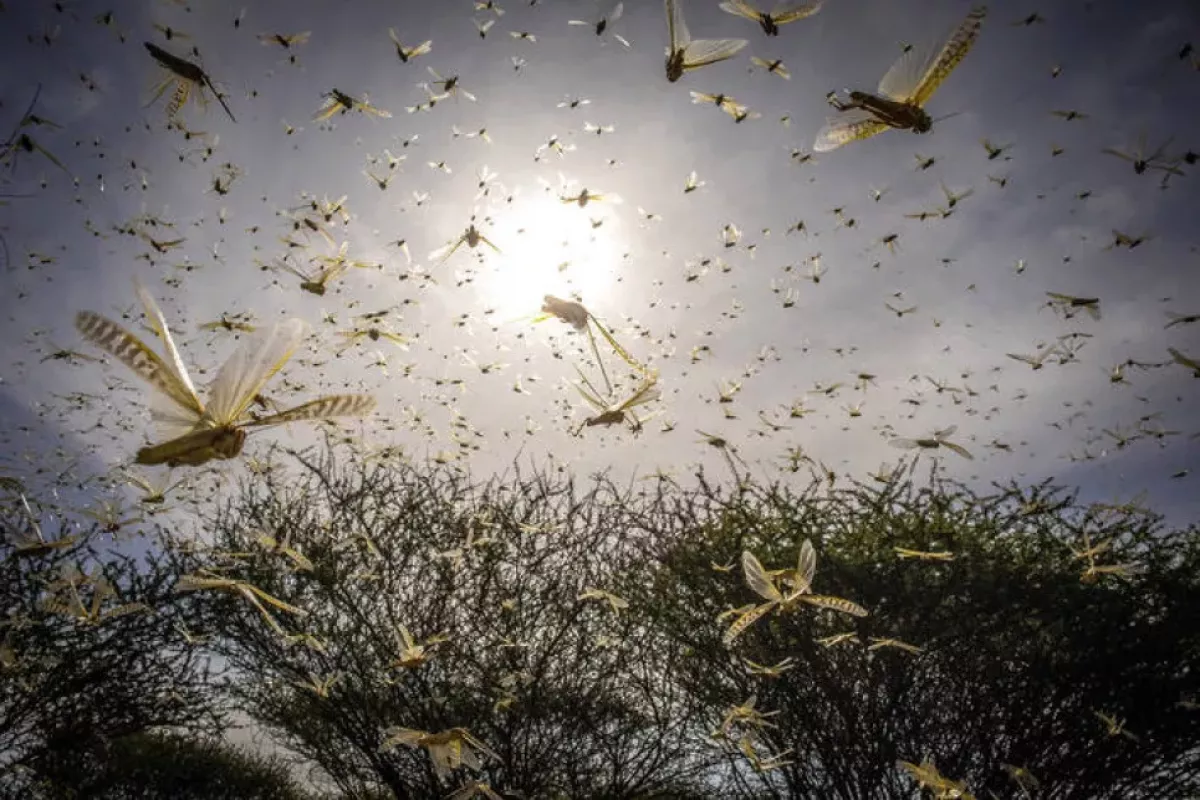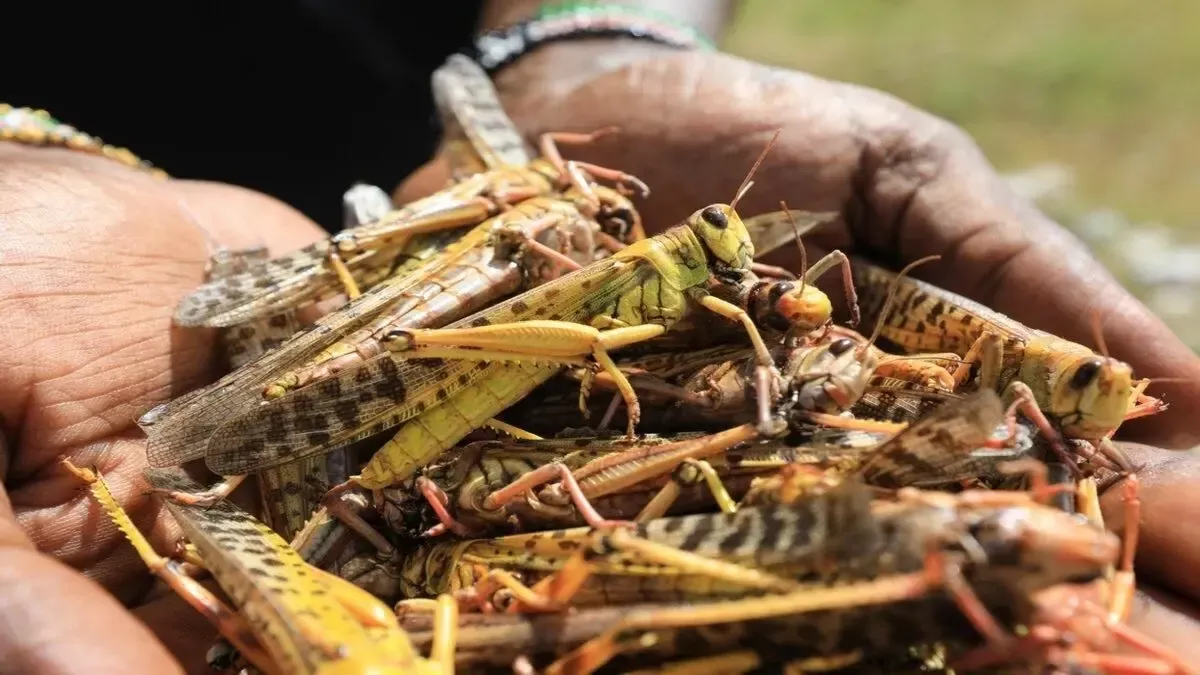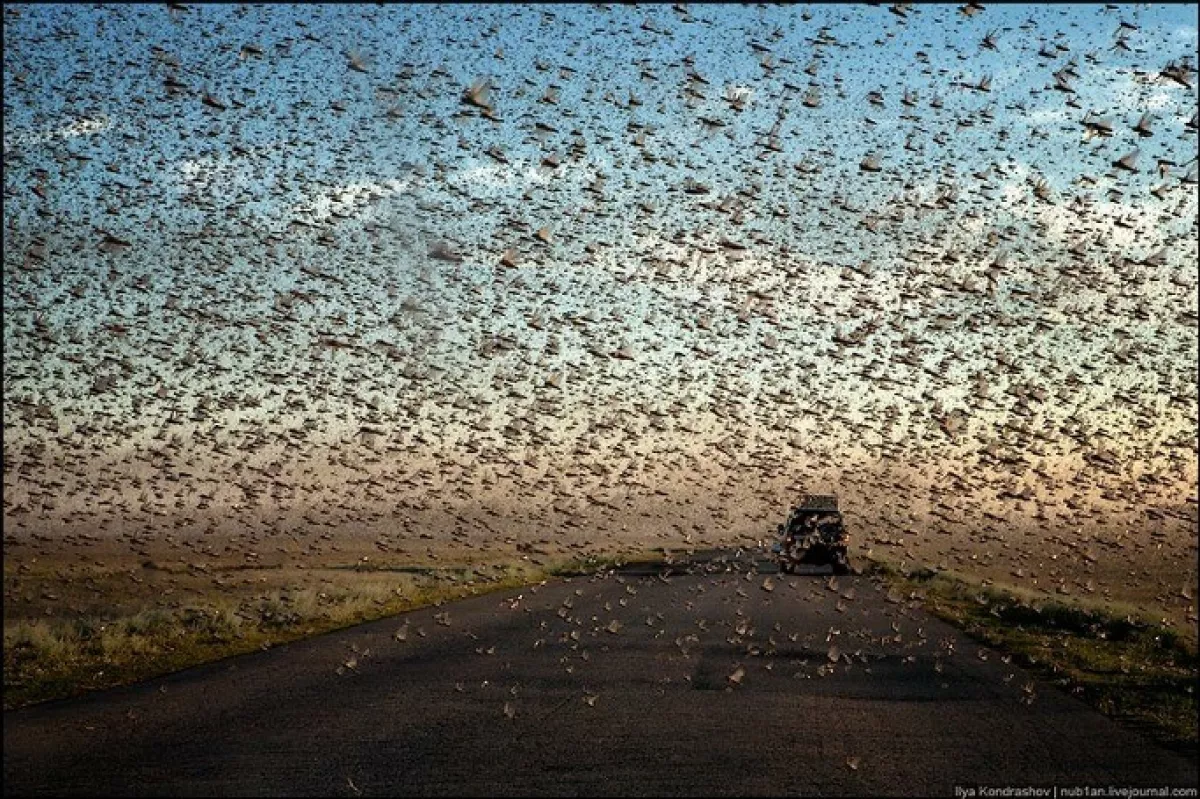Ecological alarm in the Caspian region Azerbaijan also at risk
Climate change caused by global warming is increasingly manifesting in the Caspian region through various natural disasters—shrinking of the Caspian Sea, droughts, and forest fires.
Among other things, another scourge has become more frequent in the region’s countries—locust infestations. Since this spring, these pests have been observed in several Central Asian countries, primarily Kazakhstan, and swarms of insects have also attacked parts of Ukraine. Throughout July, mass locust outbreaks continued in southern Russia, particularly in the Republic of Dagestan, where a state of emergency has been declared as a result. From the northern borders, the locusts are spreading into the South Caucasus, including our country. In response, the Plant Protection and Fumigation Centre of the Agricultural Services Agency under Azerbaijan’s Ministry of Agriculture has switched to an enhanced working regime.
Scientific studies have long confirmed a direct link between rising atmospheric temperatures and changes in insect metabolism: the warmer the environment, the more active the reproductive function of locusts and the greater their appetite. For instance, the most dangerous and voracious species—the desert locust—can consume an amount of food equal to its own body weight in a single day. Moreover, with just a one-degree Celsius increase in temperature, the damage these insects inflict on crops can grow by ten per cent or more.
Locusts cause severe harm to cereal and oilseed crops, vegetables, cotton, and fruit trees. The greatest damage threatens regions with a temperate climate, where the bulk of agricultural production is concentrated. According to observations, locust population surges typically occur every 8–10 years. However, due to climate change, this cycle has accelerated in several regions. The last large-scale locust invasion in Central and South Asia, the Middle East, and the South Caucasus took place in 2019–2020.

In February–March of this year, experts from the UN Food and Agriculture Organisation (FAO) recorded mass movements of desert locusts in northwest Africa. Swarms of these voracious insects attacked agricultural lands in Algeria, western Libya, and southern Tunisia.
This year, FAO has also reported a high level of risk due to a rising locust population in Central Asia, southern Russia, Ukraine, and parts of the South Caucasus. In Central Asia, Kazakhstan faces the greatest threat. A large-scale anti-locust campaign was launched there in the spring, with pest hotspots detected in 15 regions across the country. The Kyzylorda and Aktobe regions are particularly at risk, and in June, data indicated a potential spread of locusts across an area of up to 2 million hectares.
Swarms of Egyptian locusts have also been spotted this summer in various regions of Ukraine, including Kyiv, Dnipro, and Zaporizhzhia oblasts, and have reached the Kryvyi Rih area and Odesa. In Ukraine, the situation is significantly complicated by the ongoing war, making it nearly impossible to combat locusts in regions near the front line.
Azerbaijan has long been within the high-risk zone for invasions by migratory locust swarms, and the climate changes of recent years—mild, wet winters followed by dry summers—have created favourable conditions for the reproduction of several locust species directly within the country. The main threats to Azerbaijan stem from three locust varieties: the Moroccan locust (DMA), the Italian locust (CIT), and to a lesser extent, the Asian migratory locust (LMI).
In response, FAO specialists have been actively involved for several years in developing local programmes for Azerbaijan and providing technical assistance to strengthen the country’s locust control efforts.
Over a decade ago, Azerbaijan experienced an invasion of the Italian locust: large-scale CIT migrations were recorded in 2012–2014 and again in July 2018, affecting the Shaki district and parts of the north-western regions. In 2019–2020, locust infestations were observed in southern Russia, including Dagestan and especially the Volgograd region, with the impact partially spilling over into Azerbaijani territory. Notably, five years ago, swarms were reported in the Samukh, Shamkir, and Tartar districts.

This summer, another large-scale locust outbreak was recorded in northern Dagestan, where the insects have infested around 145,000 hectares of land. At the end of July, a state of emergency was declared in four districts of the republic. The outbreak has been attributed to restrictions on the use of chemical treatments on federally owned lands, protected environmental zones, and areas near water bodies—factors that have facilitated the influx of voracious insects from neighbouring regions of the North Caspian.
In response to the mass spread of locusts in Dagestan and the declaration of a state of emergency, the Plant Protection and Fumigation Centre of the Agricultural Services Agency under Azerbaijan’s Ministry of Agriculture has switched to an intensified operational mode. Regular monitoring has begun in areas bordering the Russian Federation. Given the threat of migration, all necessary machinery and equipment have been put on full alert for rapid deployment of chemical control measures.
Surveillance and control measures have been stepped up across the regions, and local structures have been fully supplied with the necessary insecticides. According to data from regional offices of the Plant Protection and Fumigation Centre, as of July this year, monitoring was conducted over an area of 47,178 hectares, with infestations detected on 10,315 hectares. Chemical control operations were carried out on 5,100 hectares.
Notably, this year has also seen a rise in the locust population on the Absheron Peninsula, where the insects become more active during extreme heat. Locusts have also been observed in Astara, Lerik, Shabran, Shaki, Aghstafa, Tovuz, and Gazakh.
“The locust density is not very high—about 2 to 3 insects per square metre,” Jeyhun Ibrahimov, head of the Plant Protection and Fumigation Centre, recently told local media. “The issue is that due to the hot weather and the reduction of green areas in suburban districts, there is an acute shortage of food, which has caused the locusts to migrate in search of vegetation to parks and private gardens in the capital.”

According to Barat Ahmadov, Director of the Centre for Applied Zoology at the Institute of Zoology, there has been a noticeable increase in the population of Egyptian locusts on the Absheron Peninsula this summer. “A similar phenomenon occurred a few years ago: Egyptian locusts mostly reproduce in sandy areas near the sea and around springs. During periods of high heat and humidity, their population grows more rapidly and earlier in the season,” he explained.
Experience from the FAO and other specialised international institutions shows that targeting adult locusts with chemical agents is not always effective. The insects may die several days after being poisoned—by which time they have often already inflicted considerable damage on local vegetation and, crucially, laid eggs in the soil.
The only effective way to prevent a locust outbreak the following year is to destroy the eggs deposited in the ground using appropriate pesticides. For this reason, it is critically important to conduct systematic annual research into natural locust breeding hotspots and to treat at-risk areas in a timely manner—before a new generation of these dangerous pests can emerge.








